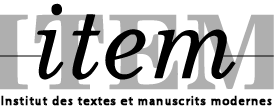Séminaire :
Séminaire Manuscrits scientifiques / 2023-202421/03/2024, ÉNS, 45 rue d'Ulm, 75005 Paris. Salle INFO1 (Ada Lovelace), 14h-16h.

Page from a notebook kept by the scientist Mary Somerville. Table at the top of the page summarises estimates of the Earth’s ellipticity. From a collection of documents shelfmarked Dep. c. 352. Archives of Somerville College, Oxford; held on deposit by the Bodleian Libraries
Mary Somerville (1780-1872) was a Scottish mathematician and natural philosopher. During the 1810s she contributed multiple solutions to maths problems posed in the New Series of the Mathematical Repository, and in 1831 she published a widely celebrated partial translation of Pierre-Simon Laplace’s Traité de Mécanique Céleste. It is somewhat strange that this critically successful book marked the end of her published works in mathematics; it by no means marked the end of her studies. Somerville’s continued interest in mathematics and her deep engagement with mathematical communities is testified to in the extensive collection of books, papers, and letters which she left behind. Uncovering and analysing these mathematical traces is further complicated in that they are often mixed in with her work in other scientific domains, or even jotted in the margins of manuscript drafts of her autobiography. In this talk I will explore the different manuscripts which bear witness to Somerville’s ongoing mathematical work (into her 92nd year!), and reflect on the role of unpublished materials in circulating knowledge during the 19th century.
Dr Brigitte Stenhouse is a Lecturer in History of Mathematics at the Open University, UK. Her research has explored the mathematical work of Mary Somerville (1780-1872) and how Somerville accessed scientific communities as a lady of the minor gentry. More recently, Stenhouse has written on the reciprocal influences of marriage and mathematical careers.

















